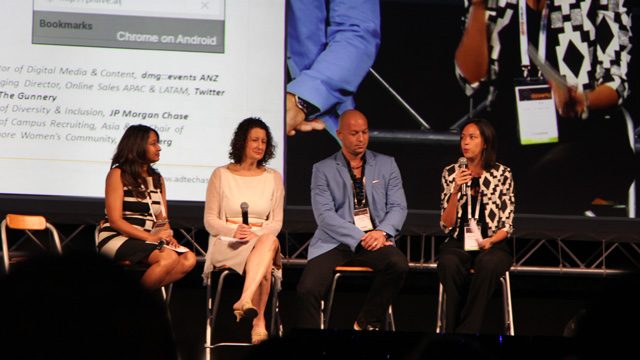SUMMARY
This is AI generated summarization, which may have errors. For context, always refer to the full article.

MANILA, Philippines – We’re halfway through 2015 and terms like “Big Data,” “Reach,” and “SEO” are not foreign concepts to most brands and marketers anymore. We are fully in the Digital Era and everyone is already using data and social media to reach out to consumers. Still, the question remains: are we doing it right?
In the face of new technologies and platforms, marketing strategists need a “back to basics” approach in choosing which tools and strategies they should use to propel their clients’ businesses. This was the prevailing take-away at Ad:Tech ASEAN, held last July 7-8 at the Suntec Convention and Exhibition Centre in Singapore.
Hundreds of digital marketers and dozens of technological start-ups from the ASEAN region gathered for a two-day marathon of panels, talks, and exhibits showcasing the latest digital tools for business and marketing. So what do brands need to know about the new, digital-savvy consumer market of the ASEAN region? Here is a rundown.
Diversity is celebrated
During a keynote panel discussion called “The Power and Opportunity of Diversity Marketing,” the singularity of “diversity marketing” in the ASEAN region (versus that in the US) was discussed.
Aliza Knox, Managing Director of Online Sales in Asia-Pacific at Twitter, mentioned how clients use Twitter data to determine “diversity of interest” rather than ethnicity in a racially diverse region. “Diversity around interests, versus what you look like, gender affiliations, religion,” she said. “Demographics is not old… but it’s not the only way to talk to people.”
Bianca Stringuini, Head of Diversity & Inclusion for Asia-Pacific at JP Morgan Chase, says that an inclusive marketing campaign that speaks directly to a niche market can also create impact on their surrounding communities. “For example, JP Morgan Chase’s pro-LGBTQ campaigns have gained positive feedback even from ‘straight’ or heterosexual consumers. Look at your marketing campaign and all your tools and ask yourself if this would bother anyone. That’s the first question,” Stringuini emphasized.
They are device agnostic
The mobile phone is the most important platform for marketers today: it is where they can discover more about consumers; at the same time, it is where they can reach out to potential customers best. According to Siddarth Correya, Director of Mobile Marketing – APAC at Mediacom, brands need to be “device agnostic” – seamlessly available from one medium to another as consumers switch between devices on the way from home to work to after-party drinks. Time spend on-screen is higher than ever, “but if we look at session time, it’s diminishing,” Correya said.
Aside from creating solid, shareable stories, brands need to learn fast how to market using moments. That is easier now than it was 2 or 3 years ago. “We can predict the behaviour of a consumer based on data that wasn’t available to us [before],” said Michael Lee, Regional Creative Director of inmobi. “Being able to identify these different moments and phases in your day allow us to target you effectively,” he added.
Offline tactics can boost online success
Generating online virality does not necessarily mean focusing on digital efforts and campaigns. According to Simon Kemp, Regional Managing Partner at We Are Social Singapore, a marketer’s main job is still to create “not content, but contentment.”

According to Kemp, effective digital marketing can be fueled by optimizing what brands already have: packaging, customer service, and event the product itself. The trick is ensuring that these components have a story that is so good; it’s worth sharing online. “Aim for remarkable in every aspect of your brand’s marketing – remarkable meaning, you would want to note it and talk about it,” Kemp said.
Take the example of Zalora, the shopping website that has taken Hong Kong, Indonesia, Malaysia, the Philippines, Singapore, Taiwan, Thailand and Vietnam by storm. The brand is still fully online, but they have recently released physical pop-up stores – with digital terminals instead of cashiers that mimic the website check-out process. According to Dione Song, Zalora Singapore’s Managing Director, the move effectively reached new customers who were skeptical about online shopping, and at the same time, provided a refreshed experience for their existing consumers. “Marrying online and offline isn’t rocket science and neither should it be a fad. Be clear about your end objective and keep it simple and scalable,” Song said. – Rappler.com
Add a comment
How does this make you feel?
There are no comments yet. Add your comment to start the conversation.